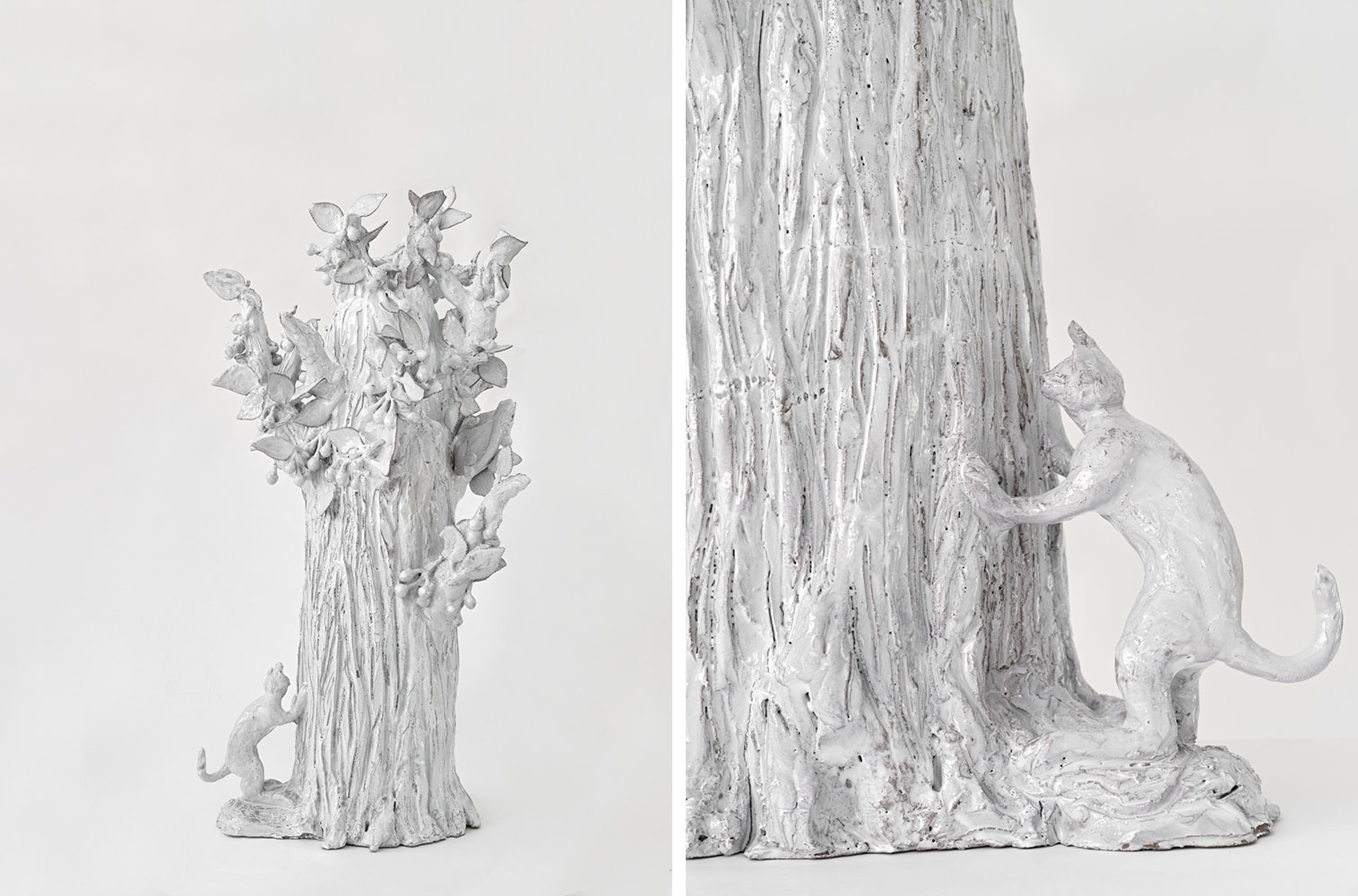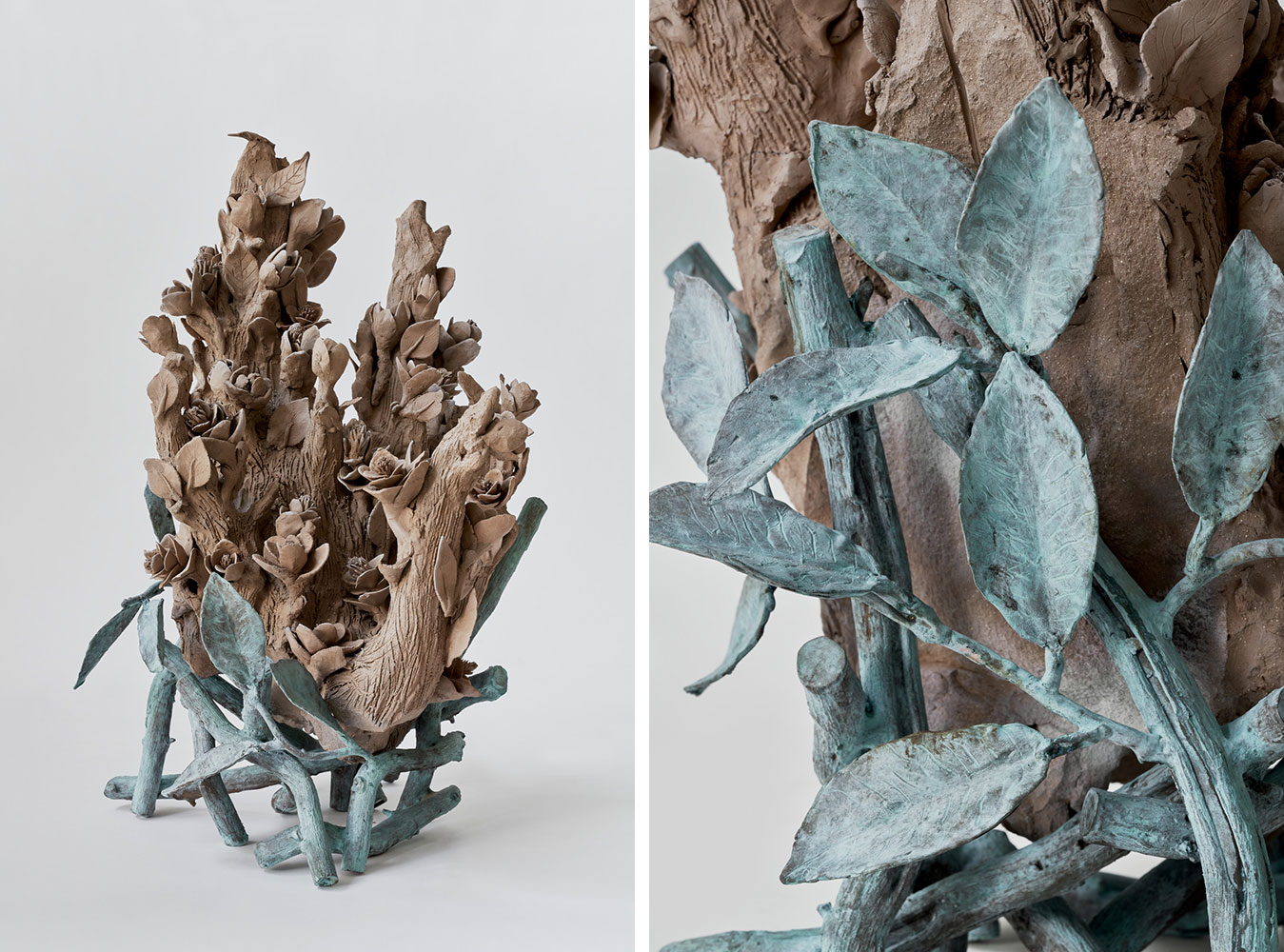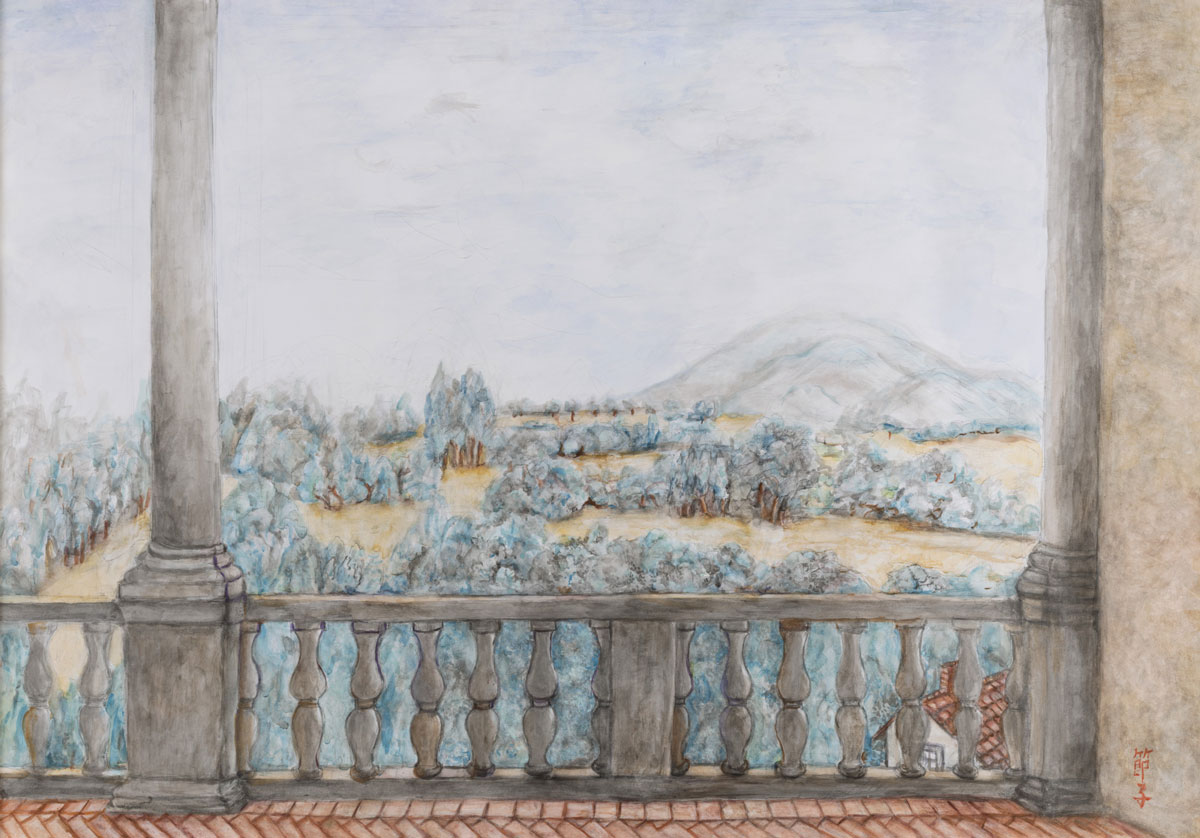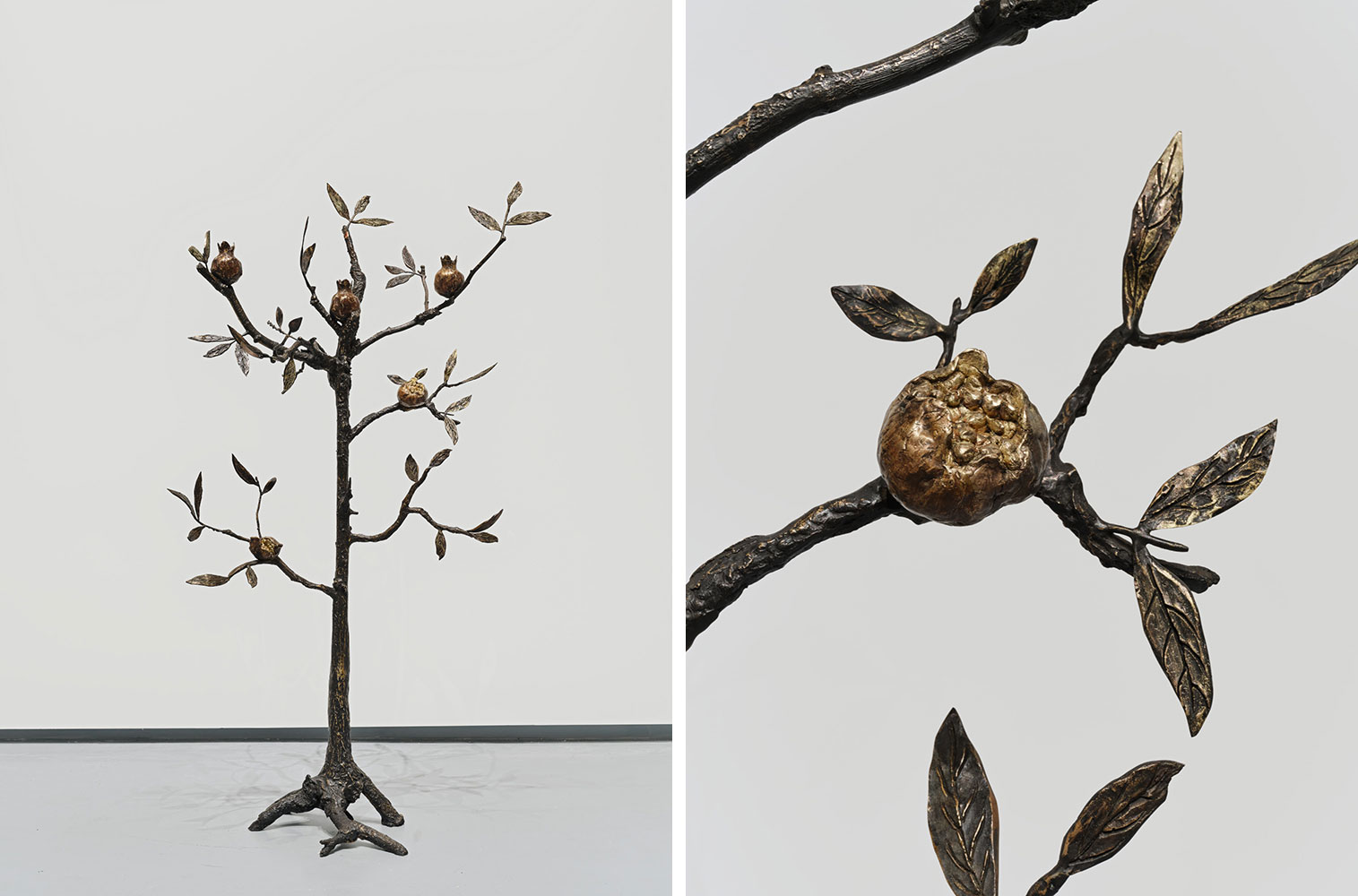PRESENTATION: Setsuko-Into Nature
 Working across many mediums—including bronze, ceramics, and gouache—Setsuko Klossowska de Rola renders tranquil subjects with rich, tactile surfaces. Her work connects natural and constructed elements, representing the symbiosis of life and death, growth and decay. Her still lifes, interiors, and landscapes convey the joy of life embodied by natural forms, crafted objects, and intimate spaces.
Working across many mediums—including bronze, ceramics, and gouache—Setsuko Klossowska de Rola renders tranquil subjects with rich, tactile surfaces. Her work connects natural and constructed elements, representing the symbiosis of life and death, growth and decay. Her still lifes, interiors, and landscapes convey the joy of life embodied by natural forms, crafted objects, and intimate spaces.
By Dimitris Lempesis
Photo: Gagosian Gallery Archive
On view in Setsuko’s solo exhibition “Into Nature” are new ceramic sculptures, produced at Astier de Villatte’s Paris workshop and made of terra-cotta glazed in white enamel. Setsuko’s renderings of trees, with their delicately modeled representations of acorns, blooms, foliage, and fruit, emphasize the rooted solidity of their trunks to convey lasting strength and emergent growth. Reminiscent of Japanese ceramics dating back to the age of Jōmon earthenware (c. 10,500–300 BCE), these works also refer to the animistic Japanese religion Shintō, to which trees are of central symbolic importance.Setsuko’s new sculpture “Le Chat et l’Oiseau” (2023) represents a cherry blossom tree, a metaphor for life’s intensity and transience, with an attendant cat and bird, themselves recurrent symbols in Japanese folklore. “Fantaisie de Magnolia” (2022), another sculpture not previously exhibited, is the artist’s only work to combine elements of terra-cotta and painted bronze, the titular plant’s earthen blooms emerging from a metallic nest of pale green stalks and leaves. Also included in Into Nature are spectacular new, large-scale versions of Setsuko’s bronze pomegranate chandeliers, “Grand Chandelier (grenades)” (2023), which are covered in painted leaf forms and produced in two different colored patinas. These are on view together with smaller-scale sculptural candelabras in bronze adorned with fig and grapevine motifs. A grouping of Setsuko’s paintings and works on paper charts her development as an artist since the 1960s, when she was based in Rome, through the COVID-19 pandemic. These works are complemented by “Paysage d’Italie” (2023), a new landscape study representing the loggia of her former house at Montecalvello, near Rome, where she lived with Balthus. The exhibition also features recent works on paper depicting colorful floral bouquets as well as a range of delicate still-life arrangements and domestic interiors. These invest their flattened pictorial spaces with a quiet intimacy, synthesizing traditional Japanese and European modernist aesthetics in a contemplative observation of familiar objects and settings. In all her sculptures, Setsuko renders sublime natural subjects with rich, tactile surfaces, uniting organic and constructed elements to represent the symbiosis of life and death. In her gouache and watercolor paintings of still-life and floral arrangements, domestic interiors, and landscapes, she conveys the vital joy embodied by natural forms, crafted objects, and atmospheric spaces. Combining historical Eastern traditions with twentieth-century Western ideas, Setsuko presents the viewer with a highly personal set of explorations, interpreting everyday objects and living things in ways that are at once lyrical and precise.
Photo: Setsuko, Le chat et l’oiseau, 2023, Enameled terracotta, 32 11/16 x 19 11/16 x 18 1/2 inches (83 x 50 x 47 cm), © Setsuko, Photo: Thomas Lannes, Courtesy Gagosian
Info: Gagosian Gallery, Promenade 79, Gstaad, Switzerland, Duration: 1/7-10/9/2023, Days & Hours: By appointment only, https://gagosian.com



